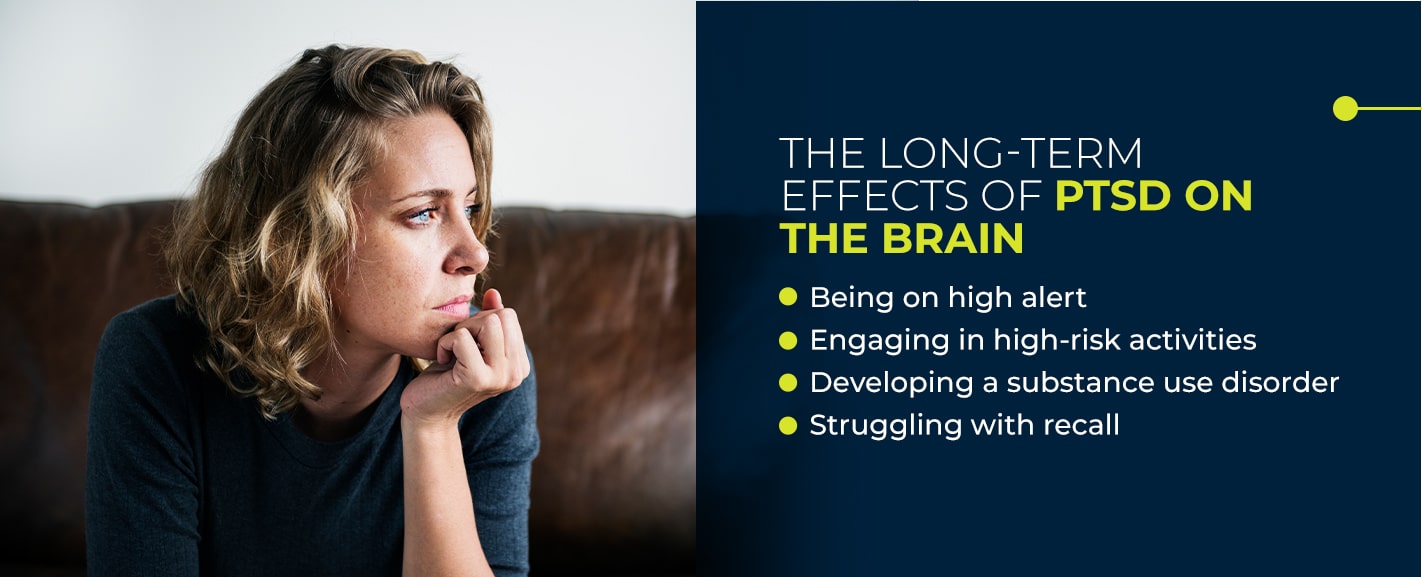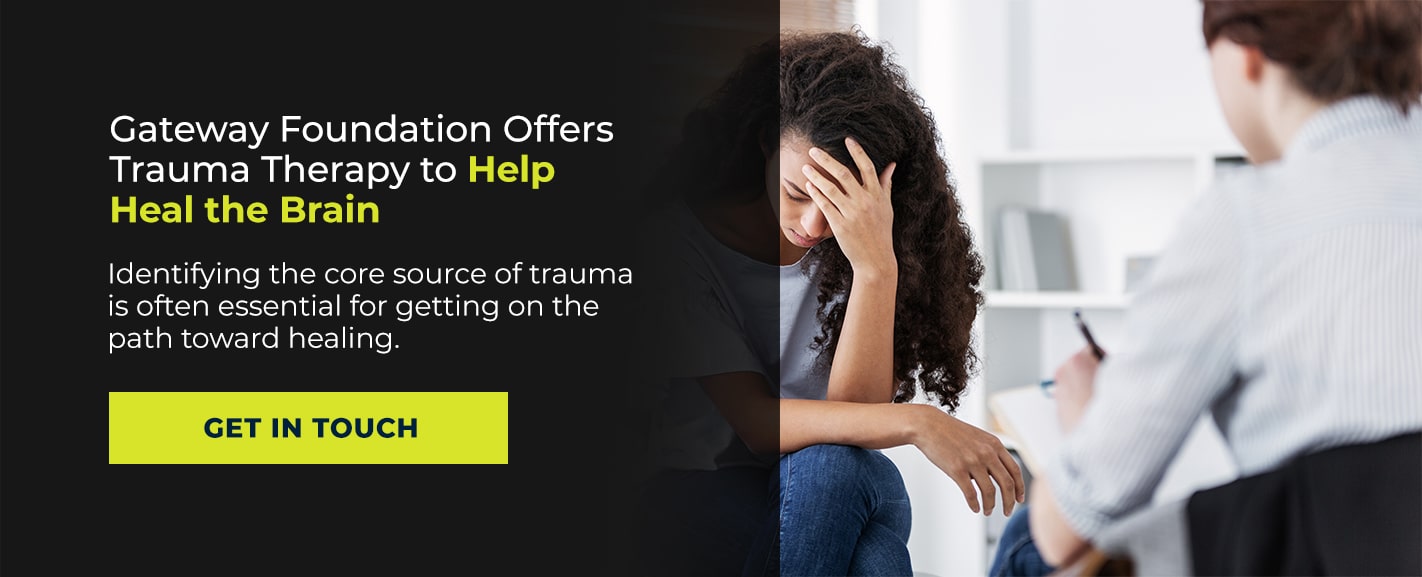- Oct 8
- Drug Addiction Treatment
After a stressful event, it’s typical for people to have an emotional response. Many people experience trauma after serving in combat or living through a mass shooting or natural disaster. People can be traumatized after an event that only affects them, such as a car accident or sexual assault.
Following a traumatic event, some people develop post-traumatic stress disorder. While more than half the population is likely to experience a traumatic event at some point, only 7 to 8% of people go on to have PTSD. PTSD’s effects are long-lasting and disruptive, making it challenging for people to feel safe. Many people living with PTSD also develop substance use, depression or anxiety disorders.
Understanding how traumatic events can affect you and how PTSD can change the brain allows you to get the help you need to get your life back following a traumatic situation.
- How PTSD Affects the Brain
- Parts of the Brain Impacted by PTSD
- The Long-Term Effects of PTSD on the Brain
- How the Brain Heals After Trauma
- Gateway Foundation Offers Trauma Therapy to Help Heal the Brain
How PTSD Affects the Brain
During a traumatic event, many people feel intense fear. Fear can trigger the stress response, also known as the “fight-or-flight” response. When your body activates the stress response, survival becomes the primary goal. After the threat has passed, the body can calm down again and resume typical functioning. Unfortunately, in some cases, the stress response doesn’t get switched off following a traumatic event, or it malfunctions in such a way that a person continues to feel threatened or afraid.
Often, PTSD symptoms start to appear several months after a traumatic event. In some cases, a person with PTSD might not develop signs and symptoms until years later. The symptoms must last for longer than one month and need to be severe enough to interfere with daily life to qualify as PTSD.
PTSD’s effects usually fall into four categories:
- Avoidance
- Cognition and mood
- Re-experiencing
- Reactivity
Parts of the Brain Impacted by PTSD
The symptoms associated with PTSD — such as reliving the event or avoiding situations that you associate with the traumatic situation — usually link to responses in specific brain areas. Learn how these regions respond in a PTSD brain vs. an unaffected brain.
- Amygdala: The amygdala plays a critical role in the body’s response to fear. One of the amygdala’s original purposes was to help early humans survive. As natural threats diminished, so did the need for the amygdala’s intensity. In cases of PTSD, the amygdala becomes overactive. Overstimulation of the amygdala causes a stress response that’s out of proportion to the level of threat a person experiences.
- Prefrontal cortex: The prefrontal cortex plays a significant role in helping people make decisions or regulate their emotions. PTSD can cause the prefrontal cortex to be underactive, making it challenging for someone to come up with calm and rational decisions. In a brain that’s unaffected by trauma, the prefrontal cortex helps balance the potentially irrational amygdala. When it’s not functioning as intended, the more primitive and fearful amygdala can take over.
- Hippocampus: A crucial function of the hippocampus is converting short-term memories to long-term ones. When someone has PTSD, the hippocampus might contribute to them constantly reliving parts of the event. Some people might also have memory problems due to a damaged hippocampus.
The Long-Term Effects of PTSD on the Brain
Changes to the brain resulting from trauma and PTSD can alter a person’s behavior or personality. Some of the signs of PTSD brain damage include the following.
- Being on high alert: When the amygdala is overactive, a person might constantly feel on edge, as if they can never relax. Sleep disturbances are common, and the hyperactive amygdala can cause a person to startle easily.
- Engaging in high-risk activities: Changes to the prefrontal cortex can lead to behavioral abnormalities. For example, someone who was previously responsible and cautious might start taking risks such as sleeping with strangers or going for high-speed joyrides. Damage to the prefrontal cortex can also lead to impulsive actions, such as high-stakes gambling.
- Developing a substance use disorder: There seems to be a link between substance use disorder and PTSD, with 46.4% of PTSD sufferers having a co-occurring substance use disorder. One potential explanation for the connection is that using substances such as alcohol can reduce the response in brain areas like the amygdala.
- Struggling with recall: When a traumatic event damages the hippocampus, it often affects memory. As a result, people with PTSD can have trouble recalling events or might remember them inaccurately. Memory distortion can make the person’s experience seem worse to them than it was. Recall damage can also cause a person to have dissociative flashbacks.
How the Brain Heals After Trauma
The brain’s plasticity allows it to heal itself after a traumatic event, but in many cases, this process takes time and patience. Fortunately, clinically proven treatment methods are available. One therapeutic approach is psychotherapy, also known as talk therapy. Talk therapy takes multiple forms, including cognitive behavioral therapy.
During CBT, you learn coping skills that help you manage stress levels. The therapy also changes your response to stimuli. For example, if a memory triggers a specific reaction, CBT can alter your associations with that memory, reducing its traumatic effect on you.
Another form of talk therapy is group therapy. During group therapy sessions, you have a chance to heal by connecting and communicating with others who might have a similar experience or who are also going through PTSD.
Along with talk therapy, some people also benefit from medication. Medically managed antidepressants and other prescription drugs can reduce PTSD symptoms. When used in conjunction with talk therapy, medication can help promote healing.
Gateway Foundation Offers Trauma Therapy to Help Heal the Brain
Identifying the core source of trauma is often essential for getting on the path toward healing. However, understanding PTSD and the brain is only the first step to recovery. Gateway Foundation offers trauma therapy and dual-diagnosis treatment programs for people with co-occurring disorders, such as PTSD and substance use disorder. Our program will help you heal from trauma while you work to overcome substance addiction. To learn more about our treatment and therapy options, contact us today.




